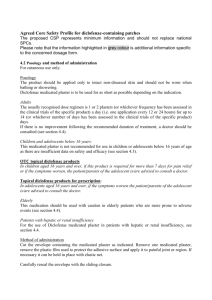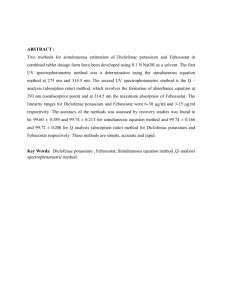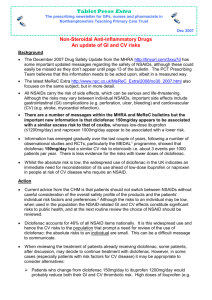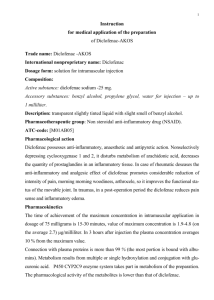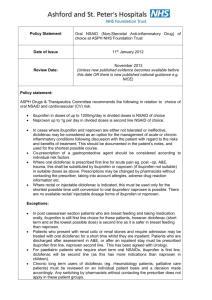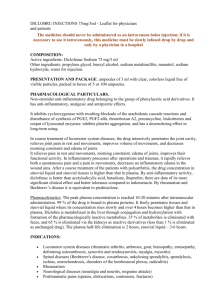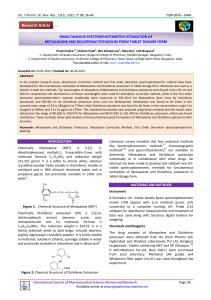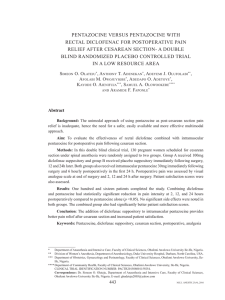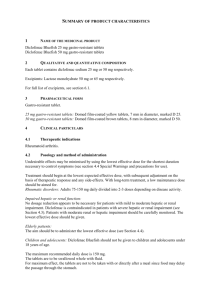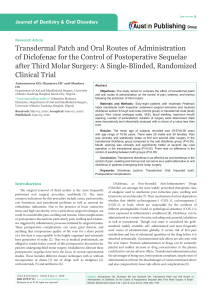Agreed Core Safety Profile for diclofenac – cutaneous formulations
advertisement
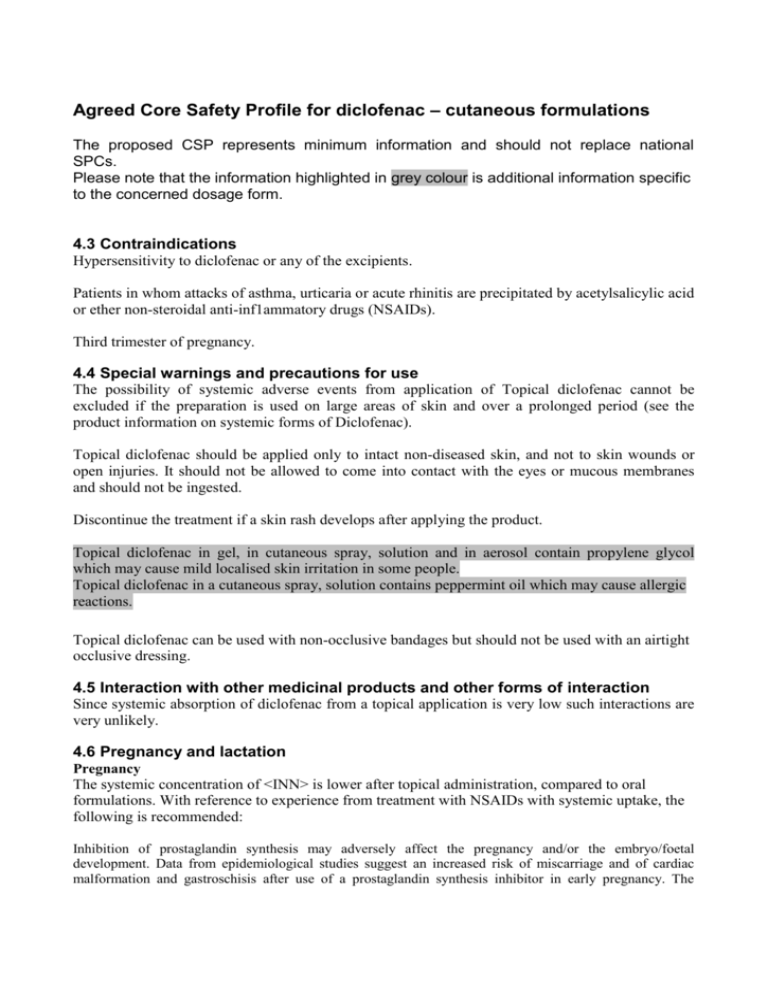
Agreed Core Safety Profile for diclofenac – cutaneous formulations The proposed CSP represents minimum information and should not replace national SPCs. Please note that the information highlighted in grey colour is additional information specific to the concerned dosage form. 4.3 Contraindications Hypersensitivity to diclofenac or any of the excipients. Patients in whom attacks of asthma, urticaria or acute rhinitis are precipitated by acetylsalicylic acid or ether non-steroidal anti-inf1ammatory drugs (NSAIDs). Third trimester of pregnancy. 4.4 Special warnings and precautions for use The possibility of systemic adverse events from application of Topical diclofenac cannot be excluded if the preparation is used on large areas of skin and over a prolonged period (see the product information on systemic forms of Diclofenac). Topical diclofenac should be applied only to intact non-diseased skin, and not to skin wounds or open injuries. It should not be allowed to come into contact with the eyes or mucous membranes and should not be ingested. Discontinue the treatment if a skin rash develops after applying the product. Topical diclofenac in gel, in cutaneous spray, solution and in aerosol contain propylene glycol which may cause mild localised skin irritation in some people. Topical diclofenac in a cutaneous spray, solution contains peppermint oil which may cause allergic reactions. Topical diclofenac can be used with non-occlusive bandages but should not be used with an airtight occlusive dressing. 4.5 Interaction with other medicinal products and other forms of interaction Since systemic absorption of diclofenac from a topical application is very low such interactions are very unlikely. 4.6 Pregnancy and lactation Pregnancy The systemic concentration of <INN> is lower after topical administration, compared to oral formulations. With reference to experience from treatment with NSAIDs with systemic uptake, the following is recommended: Inhibition of prostaglandin synthesis may adversely affect the pregnancy and/or the embryo/foetal development. Data from epidemiological studies suggest an increased risk of miscarriage and of cardiac malformation and gastroschisis after use of a prostaglandin synthesis inhibitor in early pregnancy. The absolute risk for cardiovascular malformation was increased from less than 1%, up to approximately 1.5 %. The risk is believed to increase with dose and duration of therapy. In animals, administration of a prostaglandin synthesis inhibitor has been shown to result in increased pre- and post-implantation loss and embryo-foetal lethality. In addition, increased incidences of various malformations, including cardiovascular, have been reported in animals given a prostaglandin synthesis inhibitor during the organogenetic period. During the first and second trimester of pregnancy, <INN> should not be given unless clearly necessary. If <INN> is used by a woman attempting to conceive, or during the first and second trimester of pregnancy, the dose should be kept as low and duration of treatment as short as possible. During the third trimester of pregnancy, all prostaglandin synthesis inhibitors may expose the foetus to: - cardiopulmonary toxicity (with premature closure of the ductus arteriosus and pulmonary hypertension); - renal dysfunction, which may progress to renal failure with oligo-hydroamniosis; the mother and the neonate, at the end of pregnancy, to: - possible prolongation of bleeding time, an anti-aggregating effect which may occur even at very low doses. - inhibition of uterine contractions resulting in delayed or prolonged labour. Consequently, diclofenac is contraindicated during the third trimester of pregnancy. Lactation Like other NSAIDs, diclofenac passes into breast milk in small amounts. However, at therapeutic doses of (product) no effects on the suckling child are anticipated. Because of a lack of controlled studies in lactating women, the product should only be used during lactation under advice from a healthcare professional. Under this circumstance, (product) should not be applied on the breasts of nursing mothers, nor elsewhere on large areas of skin or for a prolonged period of time (see section 4.4). 4.7 Effects on ability to drive and use machines Cutaneous application of Topical diclofenac has no influence on the ability to drive and use machines. 4.8 Undesirable effects Adverse reactions (Table 1) are ranked under heading of frequency, the most frequent first, using the following convention: very common: (>1/10); common (≥1/100, <1/10); uncommon (≥1/1,000, <1/100); rare (≥1/10,000, <1/1,000); very rare (<1/10,000); Not known: cannot be estimated from the available data. Table 1 Immune system disorder Very rare Hypersensitivity (including urticaria), angioneurotic oedema Infections and infestations Very rare Respiratory, thoracic and mediastinal disorders Very rare Skin and subcutaneous tissue disorders Common Rash pustular Asthma Rash, eczema, erythema, dermatitis (including Rare Very rare dermatitis contact), pruritus Dermatitis bullous Photosensitivity reaction 4.9 Overdose The low systemic absorption of topical diclofenac renders overdose very unlikely. However undesirable effects similar to those observed following an overdose of Diclofenac tablets can be expected if Topical diclofenac is inadvertently ingested (1 tube of 100 g contains the equivalent of 1000 mg diclofenac sodium). In the event of accidental ingestion resulting in significant systemic adverse effects, general therapeutic measures normally adopted to treat poisoning with non-steroidal anti-inflammatory medicines should be used. Gastric decontamination and the use of activated charcoal should be considered, especially within a short time of ingestion.
